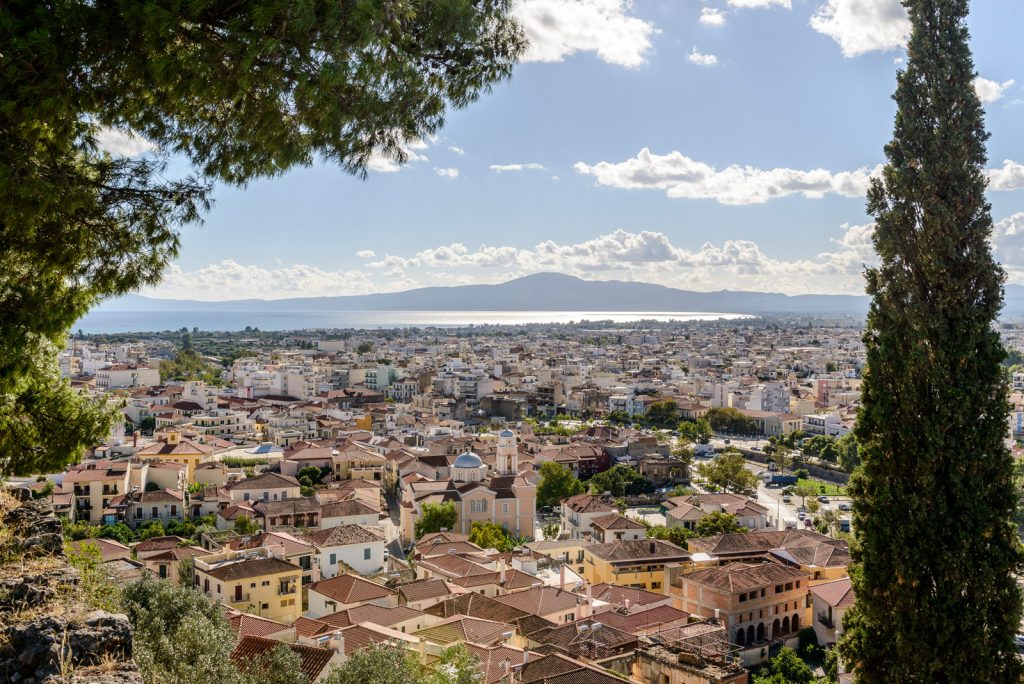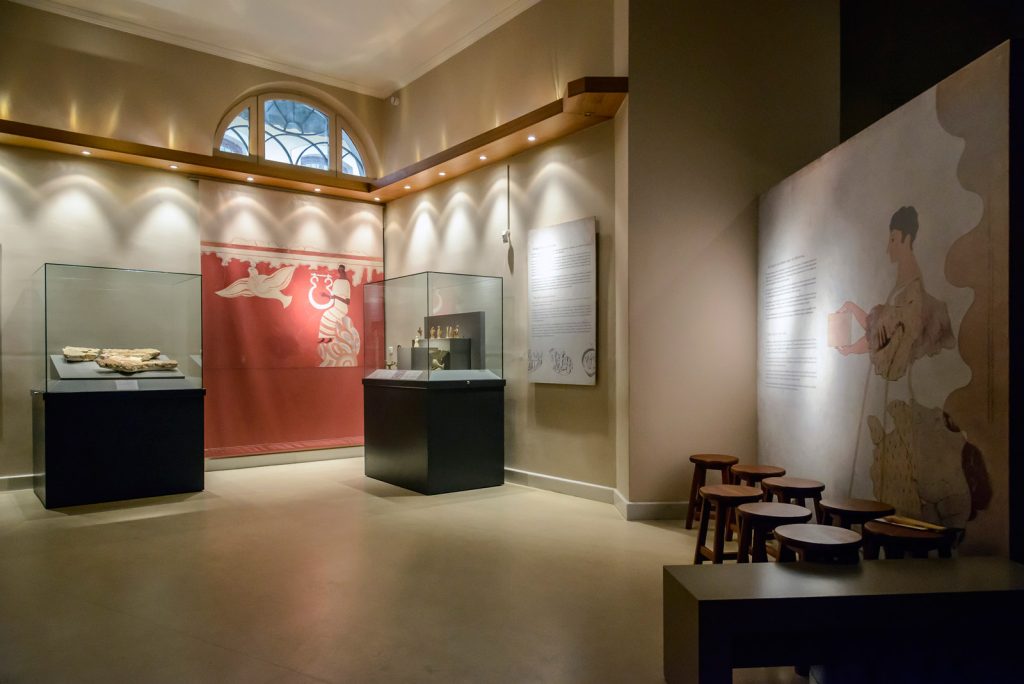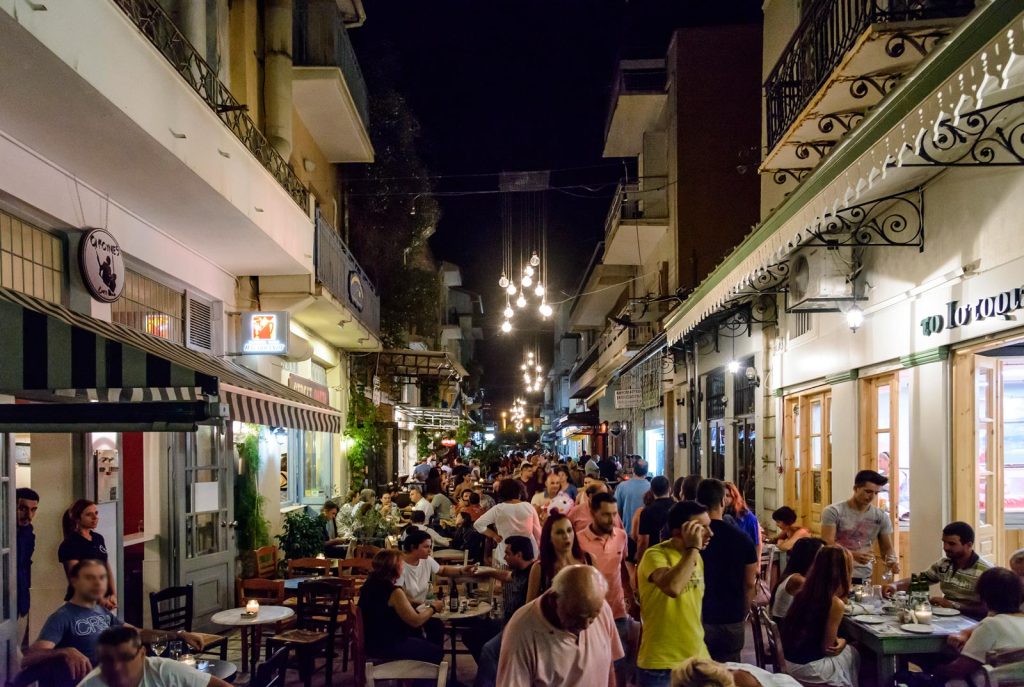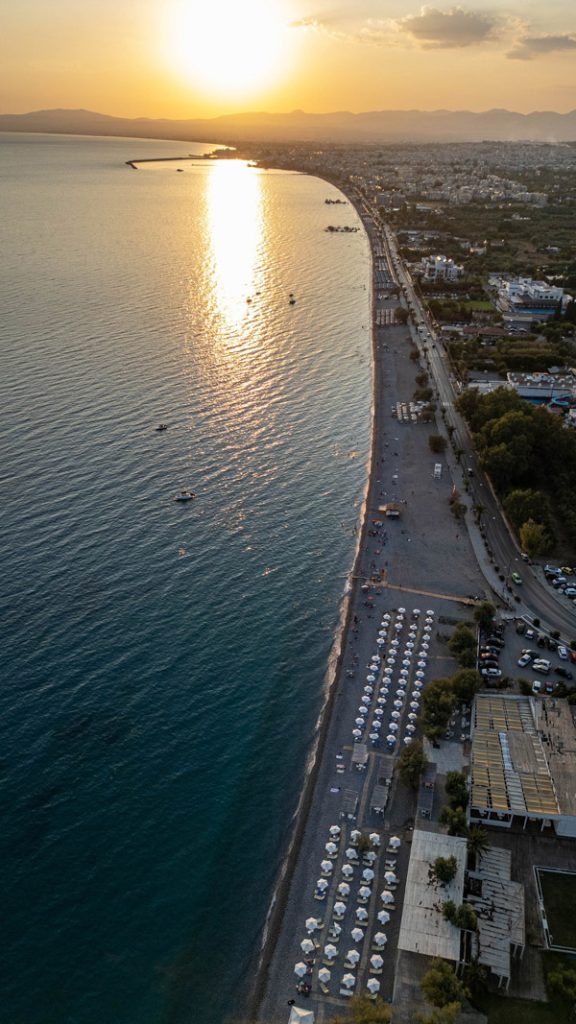Discover the city
The character of the city

Built along the head of the Messinian Gulf, at the foot of Mount Taygetos, Kalamata is the economic, commercial and cultural center of South Peloponnese, in Greece. The city is full of innumerable natural, architectural and cultural attractions. At the same time it lies at the heart of a region with rich history and world-class monuments – located about an hour away – such as ancient Messini, the Palace of Nestor, ancient Olympia, the Temple of Apollo Epicurius, Mani and Mystras and the Venetian castles of Messinia.
This is where the rich past meets the city’s exciting present. A modern, all-year-round bustling town, which serves 100,000 people every day. A city with a hospital of the highest standards, an international airport, university departments and a Technological Educational Institute, modern cultural venues and important sports facilities.
The cultural activities, the historical and religious monuments, the museums, the sea-and-mountain combination and the distinguished local products – mainstays of the Mediterranean diet – are signature features unique to the city’s character. Nightlife is another vibrant aspect of Kalamata and its suburbs. Bars and cozy little tavernas are open in the Historic Center during the winter months, while during the summer, nightlife shiſts towards the clubs and the beach bars located by the sea. The nightclubs of neighboring Verga, with their incredible sea and city view, are ideal places for a special evening out.
A look at history

Myth says that the founder of the city was Pharis, the son of Hermes and Phylodameia. It is from him that the ancient name of the city, Pharae, comes from.
Pharae was built where the Frankish castle is standing nowadays, and as Homer mentions in the Iliad, the city participated in the Trojan War. It later fell to the Laconians, until it was incorporated into the neighboring territory of Messini. It gradually lost its importance however.
By the 10th century AD, the city was already known as Kalamata, while in the 12th century it had already acquired great importance. It would flourish after its occupation by the Franks (1205). It is worth mentioning that one of the city’s rulers, William of Villehardouin, his birthplace being Kalamata, was also known as “Kalomatis”.
After 1470, the city was subjected to a long period of Ottoman rule, interrupted by brief periods of Venetian rule.
On 23 March 1821 Kalamata became the first city to be liberated from the Ottoman rule. On that day, the revolutionary Greek forces were under the command of generals Theodoros Kolokotronis, Petrobeys Mavromichalis, Nikitaras and Papaflessas. The liberation was followed by a doxology performed in the church of the Holy Apostles (a symbol of the city), where the revolutionary flags were blessed.
This was followed by a century of prosperity, based upon the trade of agricultural goods produced in the Messinian land (figs, olive oil, olives, silk and currants) as well as the local craft production. During these years, the city became known as “the Marseilles of Morea” (Peloponnese).
The port

Due to its important geographical position, the harbor of Kalamata has always been a timeless source of life and activity for the city. The medium-size artificial port is located on the northeastern half of the Messinian Gulf (37 01΄ 2Β- 22 07΄0Α) occupying a land area of 40,000 square meters. It is safe in all weather conditions – especially when north winds are blowing. Its entrance is looking to the southeast and is 145 m. wide and approximately 10 m. deep. It is protected from the waves caused by the southwest, south, east and southeast winds with two breakwaters: the south one, 1,100 m. long and the south-southeast one, which is 395 m. long.
The port meets all European and international safety regulations and the International Ship and Port Facility Security (ISPS) Code, and has obtained certification for receiving cruise ships and mega yachts. The carrying capacity of the port facilities ensures high standards for the reception of up to 3,500 passengers. At the same time, it handles a significant portion of the imports and exports of Greece.
The port area was initially inhabited on its western side. There, before the Greek War of Independence of 1821, warehouses, stores and the first customs office were erected. At that time, sea transport was taking place with boats and barges. In 1860, a new settlement appeared on the eastern side of the port. The construction of the port was completed in 1901.
The Castle
It is standing in the northern part of the city, on a low hill, while the Nedon river runs at its foot. On that same hill, Pharis built the acropolis of Pharae. It was there that the palaces of the kings of the ancient city were. On its ruins, the Byzantines built a Christian church (6th century). The site was later fortified.
It is during the Frankish rule (13th century), especially under the rule of the Villehardouin dynasty, that the Castle acquired its present form. The fortification was preserved and underwent additions during the years of the Venetian and the Ottoman rule.

The Holy Apostles
It is the symbol of the city, since it is associated with the start of the Greek War of Independence. It is located on the 23rd March 1821 (23 Martiou) Square, which was named after the date on which the city was liberated from the Ottomans. Its initial structure dates back to the 11th-12th century.
Vasileos Georgiou II Square
Kalamata’s central square, with plenty of cafés and patisseries. It is the busiest part of the city. It was first constructed in 1928 and the most recent renovation took place between 2012 and 2013. At its southern part one can find the characteristic fountain called “Psarakia”. Another fountain is situated at its northern side. There are plenty of flower beds and a lot of greenery along the square. It is around this square that the heart of the shopping center is beating.
Aristomenous Street
It was the first road to be constructed (1871) in order to connect the city with the seafront. Since then, it remains a central axis for Kalamata and a timeless point of reference. By walking along Aristomenous street, one can find commercial stores, the Vasileos Georgiou II Square, public authorities, banks and the Municipal Railway Park.
Church of Ypapanti
A majestic church that dominates the homonymous square. It is the Cathedral of Kalamata. Its construction began in 1860 and it was inaugurated in 1873.
Kalograion Monastery
It was founded in 1796 and is dedicated to Saints Constantine and Helen. It is located near the Castle and the Church of Ypapanti. Since early times, the nunnery stood out as a famous center for the production of silk textiles, amongst which the renowned handkerchiefs of Kalamata.
Municipal Railway Park
The open-air museum and park occupies an area of 54,000 sq. meters and has been operating since 1986. It is also the home of cultural activities. Apart from steam locomotives and carriages, fountains and small lakes, the park also has sports courts, playgrounds, an open-air amphitheater and a snack bar (at the old station).
Dance Hall

It was constructed with funding from the European Union in order to house the activities of the Kalamata International Dance Center during the International Dance Festival (July) as well as cultural events that take place throughout the year. It first opened its doors in July 2013 and every year it welcomes the dance world’s most prestigious names.



